Lista de Productos
Pressure Seal Globe & Check Valves
GLOBE AND NON-RETURN (STOP-CHECK) VALVES
- Globe valves are normally installed with flow and pressure under the disc. Always consult with the factory before installing valves with flow in the other direction. Under certain service conditions or when valves are equipped with cylinders or electric motor actuators, there may be a cost advantage in designing and installing the valves with flow over the disc. If actuators are sized for these conditions, care must be taken to assure valves are installed correctly.
- Globe valves are suitable for most throttling applications; however, they should not be used for throttling at less than 10-20% open. This can cause excessive vibration, noise and damage to disc and seats. Use of smaller valves with lower flow capacity may permit the valve to be open a greater percentage, thus avoiding damage. Continuous severe throttling applications may require a control valve.
- Non-return (Stop-Check) valves provide the same function as a globe valve with the addition of providing piston-lift-check valve protection in the event of backflow. The valve stem is not connected to the disc, and when the stem is in the open position then the disc is free to respond to the flow.
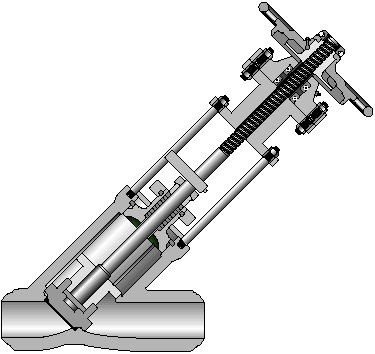 Y-Pattern Globe and Non-Return (Stop-Check) Valve |
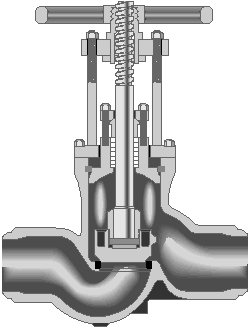 T-Pattern Globe and Non-Return (Stop-Check) Valve |
CHECK VALVES
- Check valves are suited for moderately high velocity applications. For optimum performance, however, these valves should operate within a flow range sufficient to hold the valve open fully, but not so high that it produces excessive turbulence and pressure drop. Either extreme may damage valve internals, and shorten operating life.
- Service involving frequent flow reversals or fluid pulsations should be avoided. Locating check valves no closer than five pipe diameters from elbows and other flow diverting means can minimize or eliminate problems in most installations. Where this is not possible, it may be necessary to reduce the maximum velocity by as much as 50%.
- Excessive fluid noise is usually an indication that cavitation is occurring.
- Check valves are normally designed for installation in horizontal pipe runs or in vertical lines where flow is up only. When valves are used in vertical pipe runs, this should be clearly specified.
- If severe conditions are outside these recommendations contact Pacific Valves for further information prior to use.
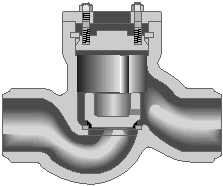 T-Pattern Lift-Check Valve |
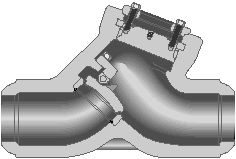 Tilting Disc Check Valve |
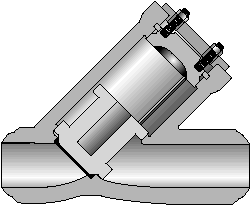 Y-Pattern Lift-Check Valve |
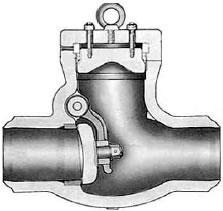 Swing Check Valve |






